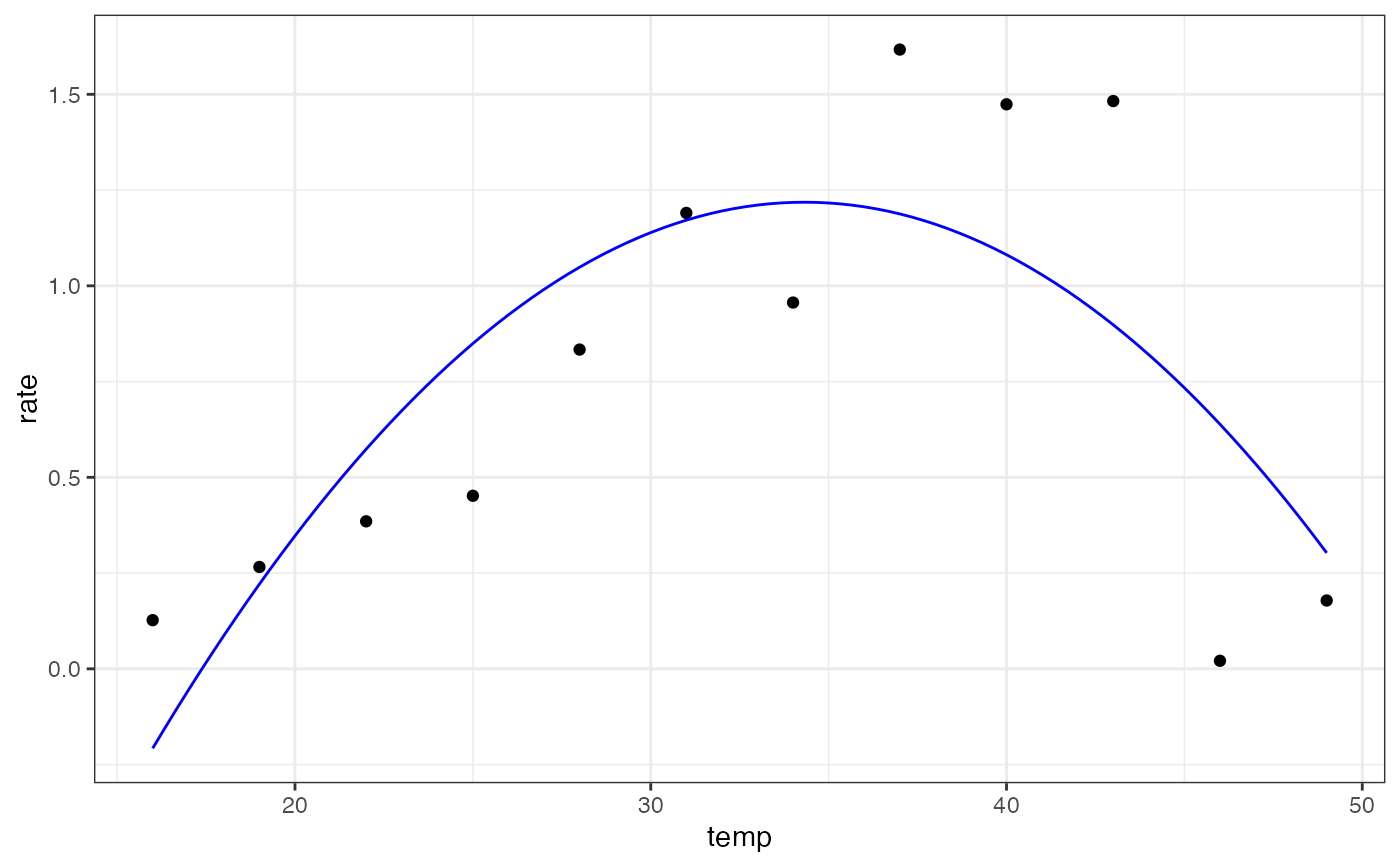Quadratic model for fitting thermal performance curves
Value
a numeric vector of rate values based on the temperatures and parameter values provided to the function
Details
Equation: $$rate = a + b \cdot temp + c \cdot temp^2$$
Start values in get_start_vals are derived from the data using previous methods in the literature
Limits in get_lower_lims and get_upper_lims are based on extreme values that are unlikely to occur in ecological settings.
References
Montagnes, David JS, et al. Short‐term temperature change may impact freshwater carbon flux: a microbial perspective. Global Change Biology 14.12: 2823-2838. (2008)
Examples
# load in ggplot
library(ggplot2)
# subset for the first TPC curve
data('chlorella_tpc')
d <- subset(chlorella_tpc, curve_id == 1)
# get start values and fit model
start_vals <- get_start_vals(d$temp, d$rate, model_name = 'quadratic_2008')
# fit model
mod <- nls.multstart::nls_multstart(rate~quadratic_2008(temp = temp, a, b, c),
data = d,
iter = c(4,4,4),
start_lower = start_vals - 10,
start_upper = start_vals + 10,
lower = get_lower_lims(d$temp, d$rate, model_name = 'quadratic_2008'),
upper = get_upper_lims(d$temp, d$rate, model_name = 'quadratic_2008'),
supp_errors = 'Y',
convergence_count = FALSE)
# look at model fit
summary(mod)
#>
#> Formula: rate ~ quadratic_2008(temp = temp, a, b, c)
#>
#> Parameters:
#> Estimate Std. Error t value Pr(>|t|)
#> a -3.785505 1.240225 -3.052 0.01374 *
#> b 0.291596 0.081480 3.579 0.00594 **
#> c -0.004248 0.001241 -3.423 0.00760 **
#> ---
#> Signif. codes: 0 ‘***’ 0.001 ‘**’ 0.01 ‘*’ 0.05 ‘.’ 0.1 ‘ ’ 1
#>
#> Residual standard error: 0.4081 on 9 degrees of freedom
#>
#> Number of iterations to convergence: 5
#> Achieved convergence tolerance: 1.49e-08
#>
# get predictions
preds <- data.frame(temp = seq(min(d$temp), max(d$temp), length.out = 100))
preds <- broom::augment(mod, newdata = preds)
# plot
ggplot(preds) +
geom_point(aes(temp, rate), d) +
geom_line(aes(temp, .fitted), col = 'blue') +
theme_bw()

